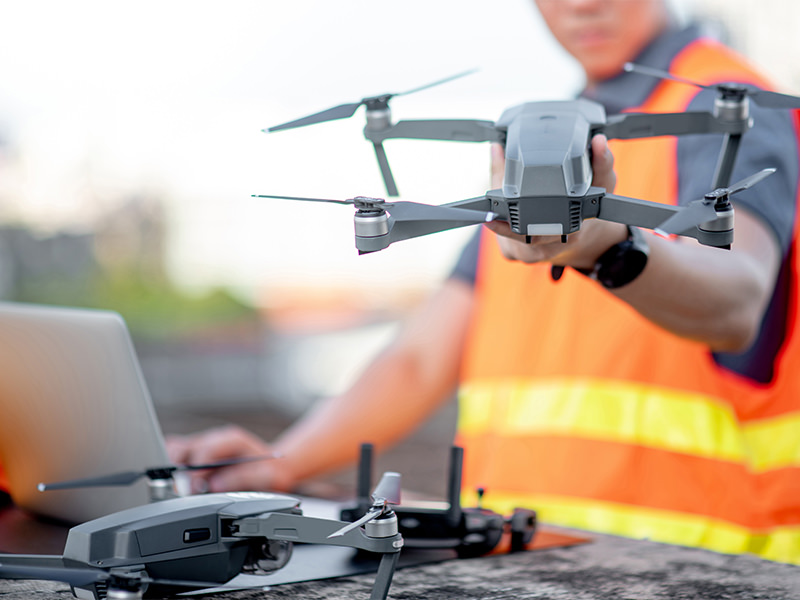Using a drone to collect aerial evidence at a site inspection offers several benefits over traditional methods of collecting evidence. Here are a few key advantages:
- Improved perspective: A drone can capture aerial footage that provides a unique perspective of the site, which can be valuable in assessing the overall layout and topography of the area. This perspective can help to identify potential hazards, locate sources of pollution, and evaluate the condition of structures and equipment.
- Increased safety: Using a drone to collect aerial evidence can reduce the need for inspectors to physically enter hazardous or hard-to-reach areas, which can increase safety and reduce the risk of accidents or injuries.
- Increased efficiency: A drone can cover a large area in a relatively short amount of time, making it a more efficient method of collecting evidence than traditional methods, such as walking or driving through the site. This increased efficiency can be especially valuable in time-sensitive situations.
- Enhanced accuracy: A drone can capture high-resolution imagery and video footage that provides an accurate and objective record of the site. This evidence can be valuable in legal proceedings and can help to prevent inaccuracies or omissions that might occur with traditional methods of collecting evidence.
- Reduced costs: Using a drone to collect aerial evidence can be a cost-effective solution compared to traditional methods, such as hiring a helicopter or conducting a ground-based inspection. Drones are also more environmentally friendly, as they produce fewer emissions than traditional methods.
Make sure that your drone Pilot is properly trained and licensed to fly the aircraft. A properly trained pilot will be familiarize with their surroundings and will be alerted to areas of no-fly zones.
Overall, using a drone to collect aerial evidence at a site inspection offers numerous benefits over traditional methods. It provides an improved perspective, increased safety, increased efficiency, enhanced accuracy, and reduced costs, ultimately leading to more effective inspections and better outcomes for all stakeholders involved.





